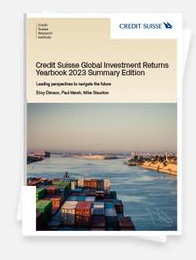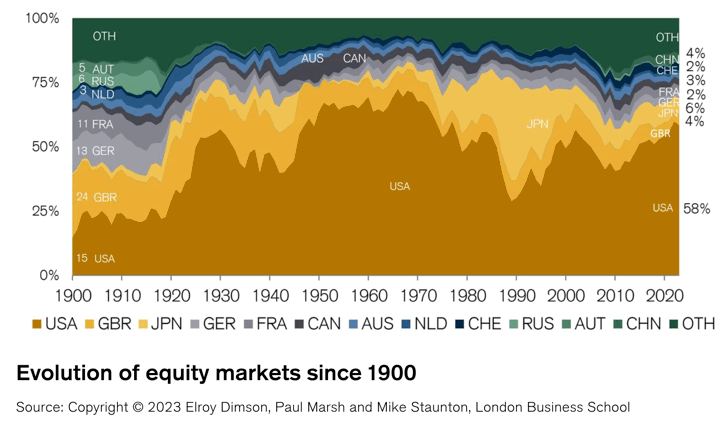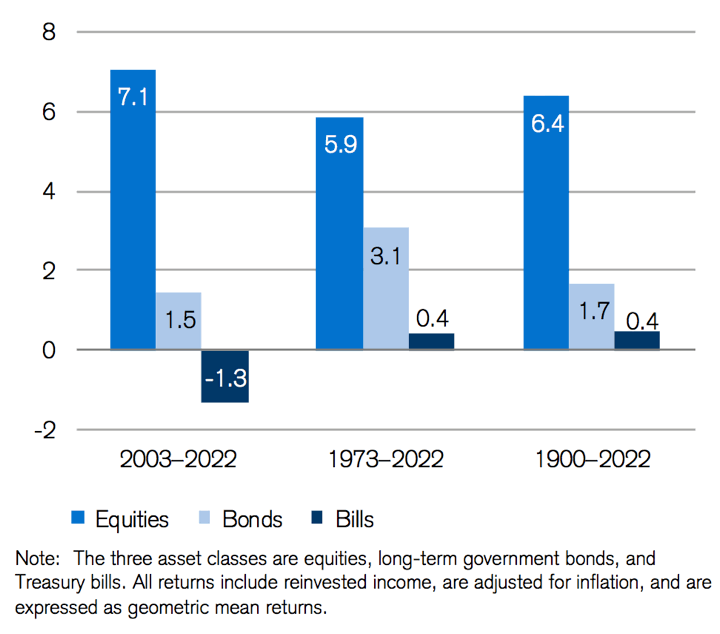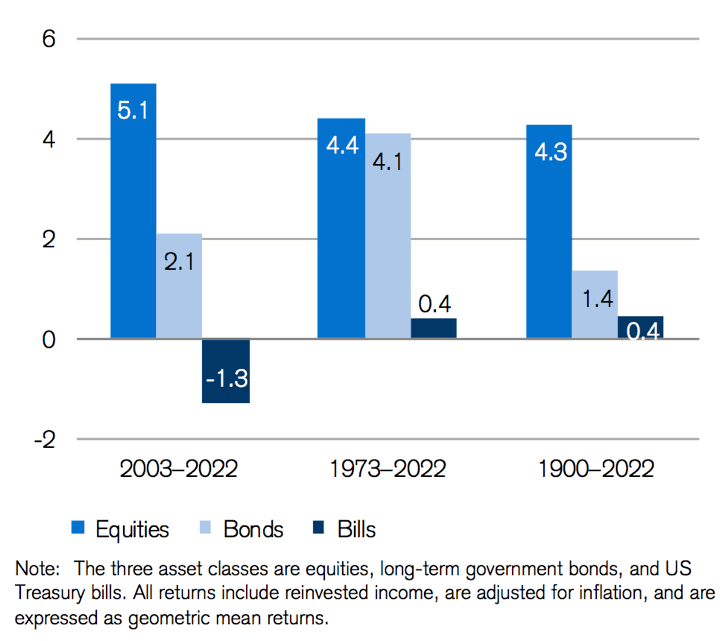 The 15th edition of the Credit Suisse Global Investment Returns Yearbook is available for free download in a 54-page PDF Summary Edition version on the Credit Suisse website. This publication provides a nice “big picture” overview of the long-term performance of global financial assets:
The 15th edition of the Credit Suisse Global Investment Returns Yearbook is available for free download in a 54-page PDF Summary Edition version on the Credit Suisse website. This publication provides a nice “big picture” overview of the long-term performance of global financial assets:
The Credit Suisse Global Investment Returns Yearbook is based on a unique database that offers a historical record of the real returns from equities, bonds, cash and currencies for 35 countries. The data spans developed and emerging markets, and stretches back to 1900. As well as being an important source of rich data on long-term investment returns, the 2023 edition contains analysis on topical issues that investors face today.
(You may be more familiar with the collapse of Credit Suisse and it’s government-brokered rescue and takeover, but this is more of a collaboration with market historians than investment bankers. I do hope that they keep publishing it in the future.)
I recommend scrolling through just to look at the cool charts with data from 1900. Here are just a few quick examples. Here is a chart that tracks the relative market capitalizations of world equity markets since 1900.

Then there the differences in the historical annualized real returns for equities, long-term government bonds, and US Treasury bills (very short-term government bonds).
Here are the annualized real returns of those three asset classes over three different periods for the United States:

Here are the annualized real returns (in USD) of those three asset classes over three different periods for the rest of the world (World ex-US):

You can see that the “equity premium” is very significant (on average) worldwide over the history that we have available, and of course that is why most of us invest at least partially in stocks today.
 The Best Credit Card Bonus Offers – 2025
The Best Credit Card Bonus Offers – 2025 Big List of Free Stocks from Brokerage Apps
Big List of Free Stocks from Brokerage Apps Best Interest Rates on Cash - 2025
Best Interest Rates on Cash - 2025 Free Credit Scores x 3 + Free Credit Monitoring
Free Credit Scores x 3 + Free Credit Monitoring Best No Fee 0% APR Balance Transfer Offers
Best No Fee 0% APR Balance Transfer Offers Little-Known Cellular Data Plans That Can Save Big Money
Little-Known Cellular Data Plans That Can Save Big Money How To Haggle Your Cable or Direct TV Bill
How To Haggle Your Cable or Direct TV Bill Big List of Free Consumer Data Reports (Credit, Rent, Work)
Big List of Free Consumer Data Reports (Credit, Rent, Work)
Speak Your Mind